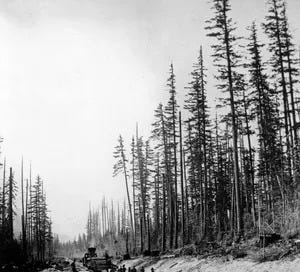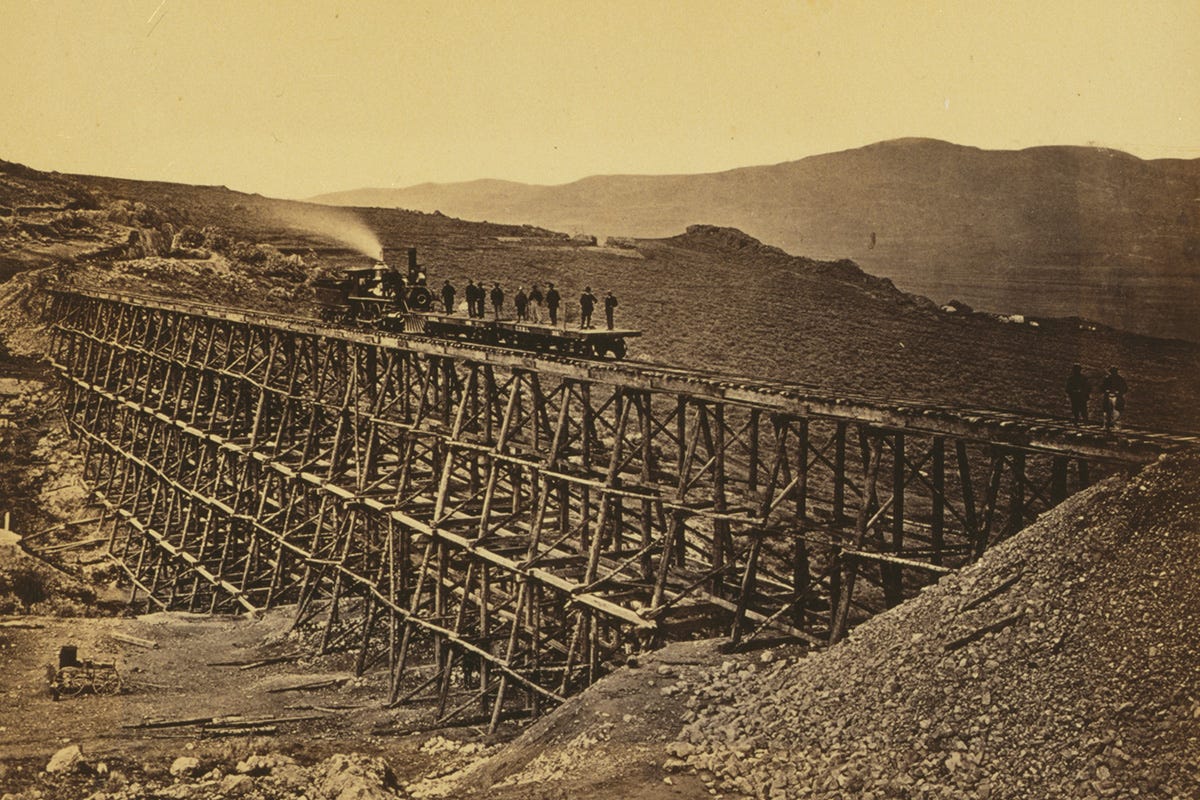Introducing The Pacific
The most authentic, insightful, and valuable information on rail transportation.
When I started writing the Rail Stuff newsletter in August of 2023, I had zero expectations for what it would become. I was (and still am) very busy building Hum, the railcar sensor company I started in 2019. I’ve got an incredible wife who is far too supportive of my nonsense and 3 crazy boys that I can never get enough time with. There were plenty of other things I could have been doing.
Yet, just like with Hum, I saw a problem and couldn’t rest until I solved it. I realized that the ideas I had about the rail industry were not widely voiced. I would talk one-on-one with people at conferences who largely shared them, but I couldn’t find them mentioned in the industry news publications. I listened to speakers at conferences, but they often focused on the same recycled soundbites as if they were somehow novel. “We’re going to grow with our customers!” (clap clap clap).
It was apparent to me that there was a growing divide in freight rail. By traditional financial measures, the major railroads did quite well. Net income, shareholder returns, and stock prices had increased dramatically. Yet, volumes continued to decline with no end in sight. The future didn’t look great and no one seemed to have any answers or knew how to grow the industry again. What the railroads were offering the market was clearly uninteresting to shippers and, in fact, downright insulting given the number of petitions and irate messages from shipper groups.
From the outsider’s perspective, it seemed that there was a lot of backslapping and champagne being popped by a select few while most scrabbled around trying to make the best of it. Truly a second Gilded Age, even if in a microcosm of the overall economy, an economy in which railroads played an increasingly lesser and lesser role. This was a problem to me and, as an engineer, I can’t help but try to solve problems.
I started writing to better understand these ideas myself and to give voice to what seemed like a line of thinking that wasn’t articulated anywhere in the industry. Now, after more than 50 articles and 2,000 subscribers, I’m going to take those efforts to the next level.
Today, I’m excited to announce The Pacific, a new media platform for the rail industry with the goal of remaking the rail industry for the modern era. We have a rich history. Now it’s time to have a bright future.
Naming a new venture is never easy, at least for me. It took me 3 solid months before I settled on the name “Hum” for my railcar sensor business. I chose the name “The Pacific” for this endeavor to evoke the rich history of growth and expansion from an earlier time when railroads were ambitious, when building track across vast plains and over and through mountains was just another Tuesday at the office.
Reaching “The Pacific” was such an audacious goal in the mid-19th century, yet visionaries like Asa Whitney, Theodore Judah, General Dodge, the colorful Doc Durant, and even President Lincoln were relentless. Without the passion and perseverance of these individuals, and many others like James J. Hill and William Strong, the US would never have become the economic powerhouse that it is today. “The Pacific” is an homage to the better, more consequential times past, but also a call to action for the future.
Today, the freight rail industry in North America stands at a crossroads. Trucks have carved away enormous amounts of market share. The US and Canadian economies have shifted from goods production to services consumption. Globalization has pushed manufacturing capabilities abroad that then return to these shores as truck-friendly containerized freight.
We are entering turbulent times where the tides of history are beginning to change again. Resurgent populism has seen the US take a heavy hand in industrial policy for the first time in decades. Nearshoring and reshoring have the potential to reshape global supply chains and domestic production. Technological advances like additive manufacturing challenge traditional operating frameworks and supply chain organization. Rail’s competitors are becoming increasingly sophisticated through GPS equipped trucks and both SaaS and cloud-first tools. These competitors are also better equipped to understand their market with live data feeds from groups like FreightWave’s Sonar.
There are bright spots in the industry. UP’s Rahul Jalali has made important strides in updating antiquated information systems. Outsiders like CSX’s Joe Hinrichs are challenging industry norms. CPKC has a new footprint to expand into and, hopefully, deliver growth in the USMCA trade.
But these are small moves in a big moment. No matter how neat the deck chairs on the Titanic are, the ship just hit a ‘berg and is taking on water.
How will the freight rail industry respond to such times? Consolidate into irrelevance or compete for “The Pacific”?
The Pacific is a rallying cry to the true believers and the doers, the mavericks and the misfits, many of whom left the industry long ago. It’s the hoisting of the Jolly Roger as we seek to rediscover what we lost, first to greed and mismanagement, then to overregulation, and now to ambivalence. It’s time to shake out more than a century of stupor and become fit for the new challenges ahead.
The Pacific will focus on what the industry can do to navigate these times until we grow once again. It will include several new features not currently available anywhere else:
A new weekly podcast of long-form conversations with industry experts including current and former railroad executives, regulatory and policy officials, and other well-known industry professionals who can share best practices and how to navigate the future.
The Rail Stuff newsletter, including an audio version for those who prefer to listen rather than read.
A new weekly article series, “What I’m Reading,” highlighting key information and analysis not widely reported in the popular press.
As we build out this platform additional features may include guest columnists, live commodity pricing data, live rail network performance data, profiles of the major companies in the industry, AI-powered news features, and more.
The Pacific will be available through a paid subscription and the RailStuff newsletter will no longer be freely available on LinkedIn, although some content may be released for free at times.
Why make this paid? There are a few different reasons:
First, it takes money to support an endeavor like this. Using a paid subscription reduces the need to bring on advertising or investors that could muddy the waters and prevent an impartial, focus on the truth.
Second, a paywall gives podcast guests some reassurance that our candid and authentic conversations are not for general consumption where they could be used in malicious ways.
Third, and most importantly, this isn’t for everyone. We’re looking for the true believers, not the casual observers. If the cost of a subscription outweighs the value this platform delivers, then this platform isn’t for you.
But if you are interested in getting the most authentic, insightful, and valuable information surrounding rail transportation today, then I hope you’ll join us as we carve a path to The Pacific.






